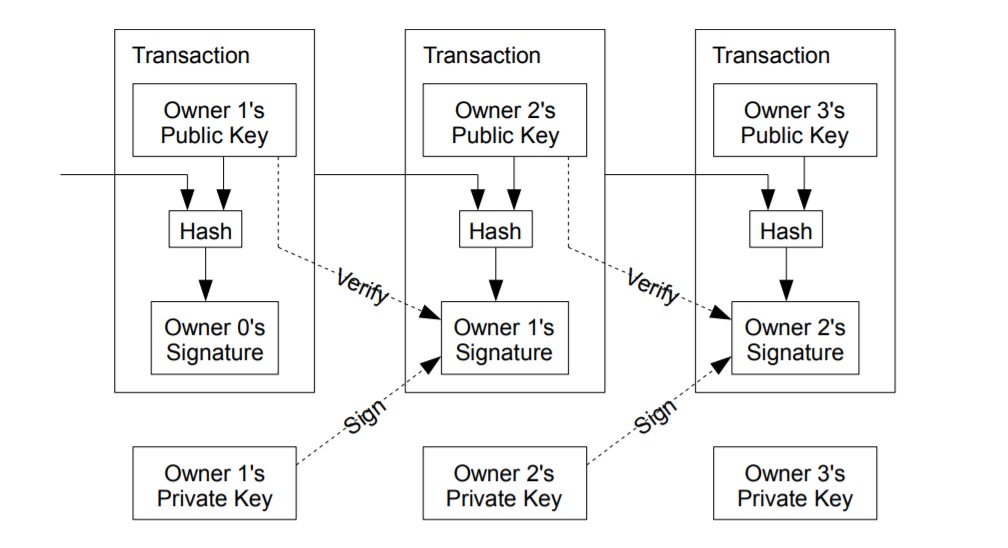Crypto Hash Rates Basics: How To Calculate Your Hash Power
- Hashrate is an industry term used to measure the speed at which a computer processes transactions.
- Using the hash rates allows the individual to measure the transaction processing power for a cryptocurrency miner, a full cryptocurrency network, or a popular mining pool provider.
- Hashrate is calculated by the number of calculations per second which is measured in thousands, millions, billions, and trillions.
TABLE OF CONTENTS
Hashrate Basics
A hash rate is a measuring unit for the processing power of a cryptocurrency miner or network. A hash is a cryptocurrency calculation required to verify a new transaction is legitimate and publish it to the public blockchain. The number of hashes a computer can perform per second is the hash rate or hash rate. The hash rate determines how fast a crypto miner can solve the mathematical equation to earn block rewards which are added to the blockchain ledger. The faster the hash rate, there is greater the chance to increase profitability for the miner.

Ethereum’s developer documents explain that a new group of transactions, called a block, is created using the hash of the previous block in the chain. Hashes are cryptographically derived using block data. The hashing system ensures a secure network and helps prevent fraud. Similarly, the original Bitcoin whitepaper explains how hash rates are measured and why they’re important.
A list of the most common hash rates is shown in the table below.
| Hashrate | Hashes Per Second |
|---|---|
| Kilohash – khash/s | 1,000 per second |
| Megahash – Mhash/s | 1 million per second |
| Gigahash – Ghash/s | 1 billion per second |
| Terahash – Thas/s | 1 trillion per second |
This Is Why Hashrates Are Important
Cryptocurrency mining is the computational activity behind the scenes responsible for processing new transactions and adding them to the blockchain, a public ledger history containing every transaction since the currency’s inception. Understanding the hashrate is important for both cryptocurrency miners and investors.
- For cryptocurrency miners, hashrate is an important metric that informs how many cryptographic calculations are being processed per second. Improving the speed of the hash rate increases the chances of mining a block and earning rewards. That is, the hashrate and the network difficulty can be used to calculate the odds of successfully validating a block and earning a reward. Moreover, a simple mining calculator can be used to determine how long it will take to mine 1 BTC with the selected mining rig with its hashrate capacity.
- For cryptocurrency investors, hashrate measures how much power a cryptocurrency network has to calculate transactions. A higher hashrate signals that more miners are active on the network and indicate a strong and secure cryptocurrency to invest in. This means it is harder to disrupt the network by hackers and malicious actors. On the contrary, if a single miner can build up 50% or more of the network’s hashing power, the network is susceptible to a 51% attack, an unlikely but not unheard of hack affecting cryptocurrency blockchains. Therefore, it is vital for the longevity of a cryptocurrency that a miner or group of miners do not control more than 50% of the hash power.
The Process To Calculate Hash Rate
Hashrate is calculated by the number of calculations per second which is measured in thousands, millions, billions and trillions. In simple terms, if a mining computer can process one calculation per second, it would have a hashrate of 1 hash per second, abbreviated as 1 hash/s. Faster mining rig's hashrate is measured using terms like kilohash for 1,000 hashes per second and Megahash per second for 1 million hashes per second.
Alternate methods to estimate the approximate mining hash power of a rig are by using third-party software such as Whattomine that has pre-configured settings for specific hardware setups.
Hashrates Are Fairly Accurate
The hash rate is the number of calculations per second and is difficult to be measured accurately. Purpose-built mining rigs such as ASICs will have an estimated hashrate for the hardware. The most accurate method to calculate the hashrate is using the mining software that will work out the hashing power based on the number of algorithms that are being solved. These values are still estimates as it is very difficult to confidently calculate the hashrate with 100% accuracy. For a comparison list of the best software for mining Bitcoin with an accurate, easy-to-use graphical user interface (GUI), read this article next.
Factors That Can Influence Hash Power
Several factors can influence the hashrate calculation. These include the performance of the mining equipment, the speed of the network connection, mining rig settings and configurations, and the number of and hashrate of other miners on the network.
You Can Use Hashrates To Your Advantage
For a cryptocurrency miner, increasing the hashrate can increase the profitability of a mining rig. Making adjustments and optimizations such as improving the crypto mining hardware rig or using different mining software could have a positive impact on the hashrate and ultimately the bottom line.
Hashing is the backbone of the entire cryptocurrency landscape. Understanding the importance of hashrates in crypto mining can help miners and investors make better-informed decisions.
Hashrate & Energy Consumption
Cryptocurrency miners are incentivized to operate with the highest possible hash rate, running powerful processors around the clock that consume large volumes of energy. The high electricity consumption of mining cryptocurrencies has raised concerns with environmental groups.
For example, Bitcoin has had negative press for its total energy use, which detractors call unsustainable. Elon Musk even took to Twitter to complain about how much electricity Bitcoin requires. The business school at Cambridge maintains a Bitcoin network power demand estimator, updated daily. As of a recent update, all Bitcoin users demand an estimated 14.96 gigawatts of power, 131.12 terawatts per year.
To put that into perspective, Bitcoin uses about 0.59% of all global electricity and about 0.29% of all energy production at the time of writing. That’s the same as all physical gold mining operators use per year. Bitcoin uses a little more energy than Ukraine and a little less than Egypt or Poland.
Conclusion
To wrap up this article, hashrate is an important metric used to understand a cryptocurrency's health in terms of network stability and security. Moreover, for miners, the hashrate can be used as a basis to implement improvements to increase the chances of mining blocks and earning rewards.



